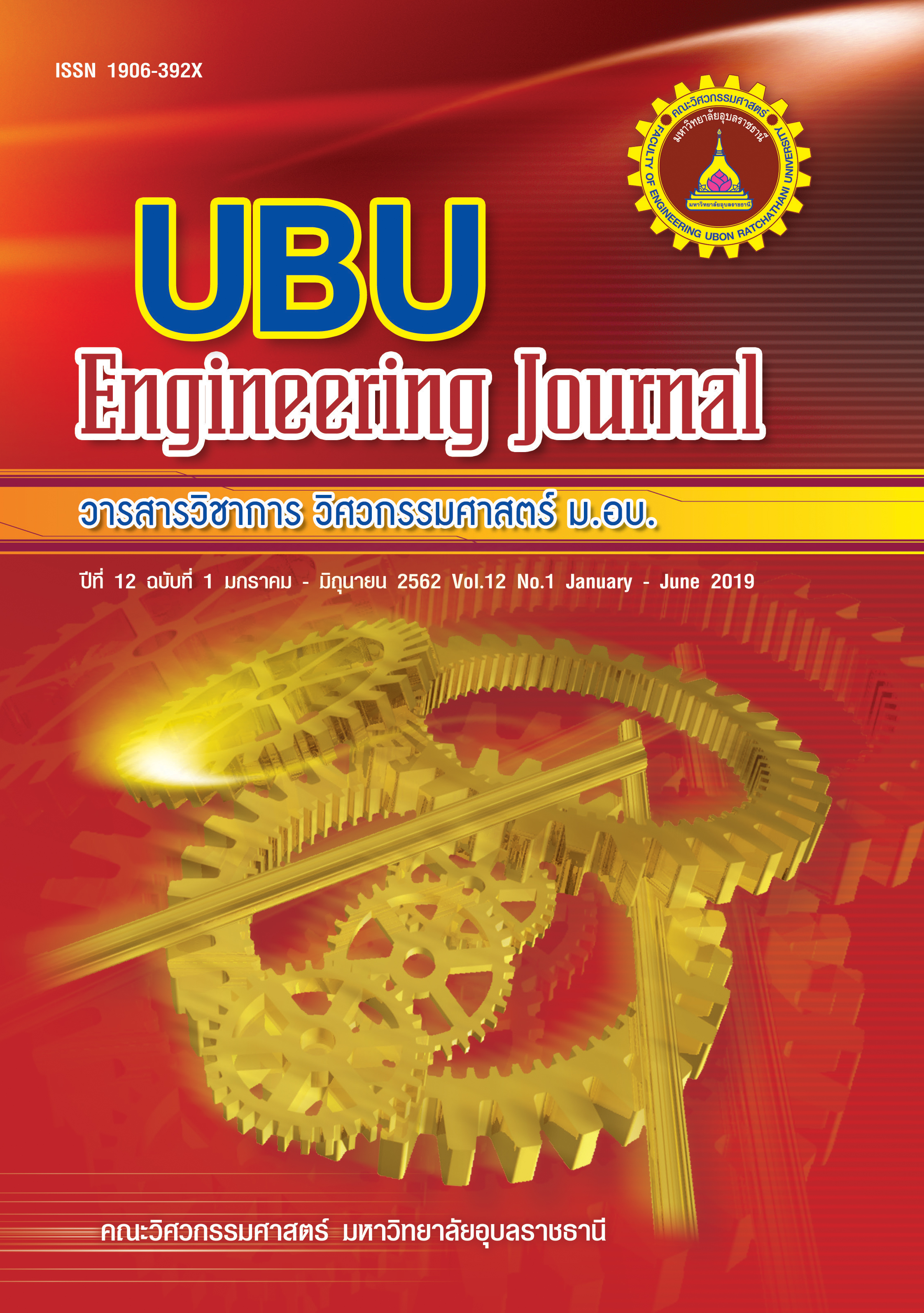Analysis of Factors for Silk Reeling of the Semi Automatic Silk Reeling Equipment with Motor Supply
Main Article Content
Abstract
The objectives of the research are to study the suitable variable of silk reeling equipment. The purpose is to develop the silk reeling equipment and investigate the suitable variable for silk reeling. The result from data analysis showed that using of human labor caused different reeling speed. This also affected the result of silk size the flaw of the silk which made in silk quality became low. Therefore, the study focused on improving the way to develop the silk reeling process. The researcher developed silk reeling which could provide the consistent speed of rotation by using of 12 voltage wiper motor. Then the researcher conducted the performance testing of silk reeling equipment with speed 80, 90 and 100 rpm respectively. The researchers conducted the test on the Luangphirot cocoon. The amount of 70, 80 and 90 cocoon nests was used in sample. They could divide the quality of silk according to the acceptable criterion of each flaw. The standard deviation of silk distributed was more than 80 points for Grade C to 2A which was the indicator of the silk thread quality. The result of testing to study the suitable variables for silk reeling found that the suitable variable for silk reeling was at the speed of 100 rpm, and the number of cocoon was 80 nests. The standard deviation of the size silk was 10.51 deniers. The defects rate of silk was 98.95 points, which was in the range of indicators silk thread quality.
Article Details
References
[2] สำนักงานส่งเสริมวิสาหกิจขนาดกลางและขนาดย่อม (2556). AEC ต้องรู้เขา…รู้เรา. เข้าถึงได้จาก: http://www.sme.go.th/Lists/EditorInput/DispF.aspx?List=15dca7fb-bf2e-464e-97e5-44032104057 0&ID=1802 [เข้าถึงเมื่อ 01/04/2557]
[3] จิตติวัฒน์ นิธิกาญจนธาร. การออกแบบและสร้างเครื่องตีเกลียวไหมเส้นด้าย. วารสารวิชาการ วิศวกรรมศาสตร์
ม.อบ. 2558; 8(2): 116–123.
[4] ประไพ ทองเชิญ. นี้คือ..ผ้าทอพื้นบ้าน. เชียงใหม่:วนิดาการพิมพ์; 2548. หน้า 91–114.
[5] Nithikarnjanatharn J, Rithinyo M. Development of the yarn sorting equipment (khonhook) by slide way. In: International Symposium on the Fusion Technologies (ISFT2013). Jeonju; 2014: 142 (MI46).
[6] ชูชาติ พะยอม. การสร้างและหาประสิทธิภาพเครื่องสาวไหมแบบกึ่งอัตโนมัติ. วารสารวิชาการคณะเทคโนโลยีอุตสาหกรรม มหาวิทยาลัยราชภัฏลำปาง. 2555; 5(2); 77–88.
[7] ส่งรักษ์ เต็งรัตนประเสริฐ. เครื่องสาวไหมยูบี3. งานประดิษฐ์สถาบันหม่อนไหมแห่งชาติเฉลิมพระเกียรติสมเด็จพระนางเจ้าสิริกิติ์ พระบรมราชินีนาถ(สมมช.) สำนักงานปลัดกระทรวงเกษตรและสหกรณ์. กรุงเทพมหานคร; 2550.
[8] ธีระชัย อิฐรัตน์. การออกแบบและสร้างเครื่อง ตีเกลียวไหม. ปริญญานิพนธ์วิศวกรรมศาสตรบัณฑิต สาขาวิศวกรรมอุตสาหการ มหาวิทยาลัยเทคโนโลยีราชมงคลอีสาน. นครราชสีมา; 2548.

